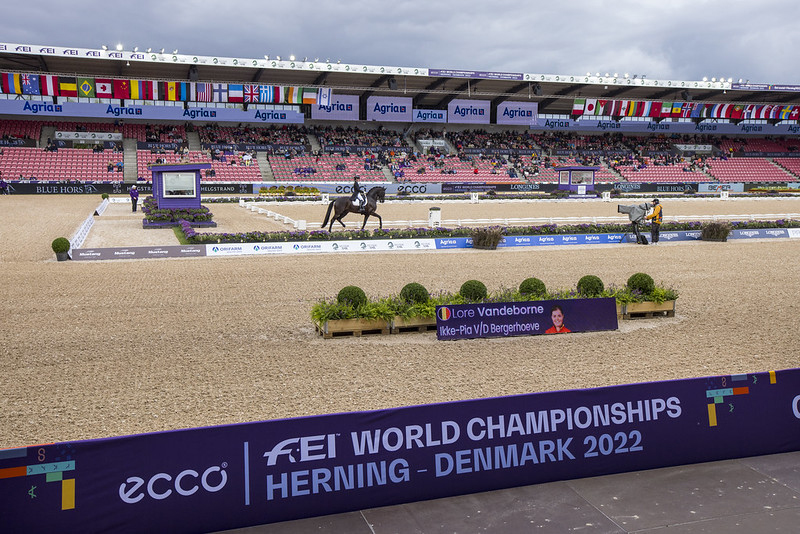 FEI photo/Leanjo de Koster
FEI photo/Leanjo de Koster
Christopher Hector looks at the bloodlines of the Dressage horses in the World Championship Top Ten
Going into this latest World Championship, I suspect I was not alone in expecting at full-on Dutch domination in the breeding stakes, and certainly, at first glance that would seem the outcome.
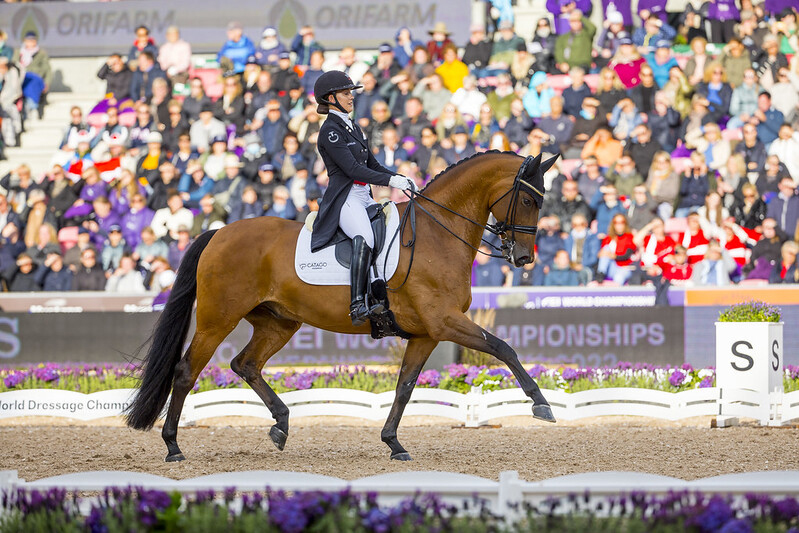
Famos Amigos (FEI photo/Leanjo de Koster)
The top score went to a horse with a Westfalian brand – the largely Dutch-bred Vamos Amigos, but second, third and fourth, were all branded KWPN, but the picture was far from clear, 5, 6, 7, 9 and 10 were all of German blood, even though two were branded Danish Warmblood.
Vamos Amigos is by Vitalis, a stallion of impeccable Dutch breeding. Vitalis is by Vivaldi (Krack C / Jazz, they don’t get much more Dutch than that) although his dam sire is the Oldenburger, D-Day (Donnerschwee / Welt As), the grand-dam, Nalvia, is Dutch Dutch, Argus / Aktion / Uniform, albeit an earlier version of Dutch breeding when the emphasis still swung from jumping to dressage and back again. The KWPN licensing commission shunned Vitalis, but he was welcomed with open arms by the Westfalians, going on to be one of Germany’s most popular stallions. Vamos Amigos is out of a mare by the German stallion, Hotline.
If we go to the fourth line of Vamos Amigos’ pedigree, it’s a 50:50 split, four from the KWPN, four German.
There is nothing ambiguous about the next three, they are very Dutch, and even though two of them were ridden by members of the British team, sadly it seems that a certain style of riding goes along with the blood…
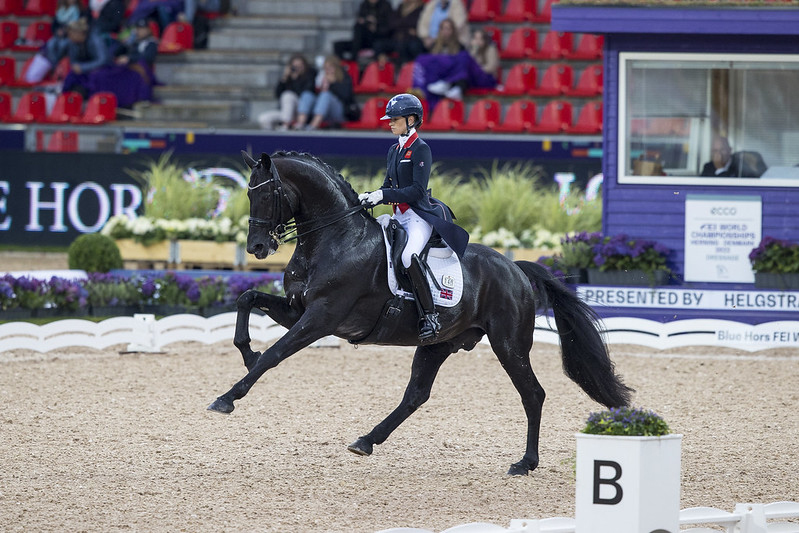
Glamourdale (FEI photo/Leanjo de Koster)
The second highest score went to Glamourdale, ridden by Charlotte Fry, who has been a long time resident at the Van Olst barn in Holland. The black stallion is by the solidly German bred, Lord Leatherdale (Lord Loxley / Ferragamo) out of a mare by the stallion that has made Van Olst such a dominant force in Dutch dressage, Negro (Ferro / Variant) with more blood from that pre-specialised Dutch era, on the bottom line: Ahorn, Ulft, Le Mexico, Farn.

Hèrmes (FEI photo/Leanjo de Koster)
Third to another Dutch stallion, Hermès, who is out of a mare who combines two of the Dutch dressage foundation sires, Flemmingh / Jazz, with even a cross from THE founding father of Dutch dressage breeding, the Trakehner, Doruto (Komet / Pindar.
Hermès is by the all-Trakehner bred Easy Game, he’s by Gribaldi (Kostolany (Enrico Caruso (Falke/ Ibikus) out of a Schwadroneur (Arogno / Ibikus) mare. Some years ago, Jan Tönjes penned a trio of articles that charted the way in which the Trakehners found their way out of the pretty but useless waste bin they’d found themselves in, and both Gribaldi and Schwadroneur were key players – and both of them Grand Prix competitors. For Jan, the transition was complete with the emergence of Hotline (by the Gribaldi son, Hofrat) out of a De Niro mare.
This is what Jan wrote in 2006: Hotline: “This gorgeous dark bay is of a different kind. His movements are outstanding, his willingness to work unbelievable. When Paul Schockemöhle and Danish premier stud Blue Hors decided to join and bid 800.000 Euro for Hotline, Germany’s horseworld was turned upside down. 800.000 Euro – unbelievable! In February Hotline was shown the first time under saddle. Even experienced breeders couldn’t believe their eyes. Totally relaxed with maximum activity from behind, the Hannoverian champion took his laps. The people in the stands were so thrilled that they forgot to applaud! Of course the Trakehners are also proud of Hotline because they always see the improvement of Warmblood breeds as part of their breeding philosophy. And if Paul Schockemöhle, who never made a secret out of his general distaste for Trakehner horses, buys such a horse, than the Trakehners must have changed.”
And there is a prize for any reader, who remembers that the dam sire of the number one horse was… Hotline. So we should not let the battle between the Dutch and the Germans obscure the fact that Herning consolidated the continuing emergence of Trakehners in international dressage.
So we have our third placegetter, Hèrmes by a Trakehner stallion, fifth placed, Isabell Werth’s DSP Quantaz is by Quaterback, out of a mare by the beautiful Trakehner stallion, Hohenstein.
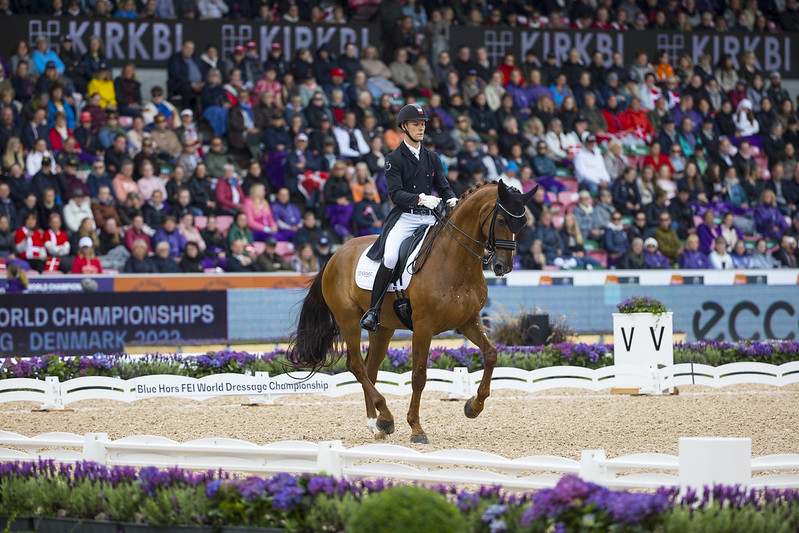
Marshall-Bell (FEI photo/Leanjo de Koster)
And rounding out our little Trakehner fest, in tenth, Daniel Bachmann’s Marshall-Bell is by Blue Hors Don Romantic (Don Schufro / Romancier) is out of a mare by Michellino by the Trakehner Michelangelo – there’s even a cross of Ibukus lurking on the bottom line…
And let us not forget that waiting in the wings, are a score of exquisite descendants of the Trakehner stallion, Millenium (by Easy Game, see above, out of a Ravel/Consul mare) and some, the ones you can get a saddle on, that is, look as if they might be stars of the future…
Fourth placed in the Grand Prix was Britain’s Charlotte Dujardin and Imothep. The gelding is mainly Dutch, but with significant German influence. He is by Everdale (Lord Leatherdale / Negro) out of a Vivaldi / Sandro Hit mare.
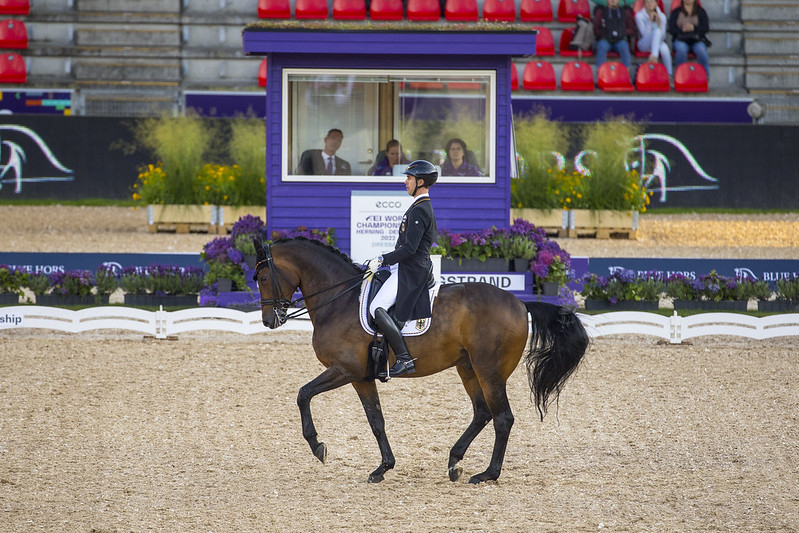
Famos (FEI photo/Leanjo de Koster)
As I indicated in my opening paragraph, German blood is still a rich source of dressage Gold. Aside from Isabell’s Quantaz, we have Benni Werndl’s ridiculously under-marked, Famos (Farewell III / Welt Hit II), are we headed into the new Dark Ages with marks galore for tension and frantically swishing tails???
We might mention in passing that Easy Game would have had another distinguished representative in Herning in the form of World Number one, Dalera, if Benjamin’s sister Jessica was not so busy at home with glam photo shoots of her maternity outfits…
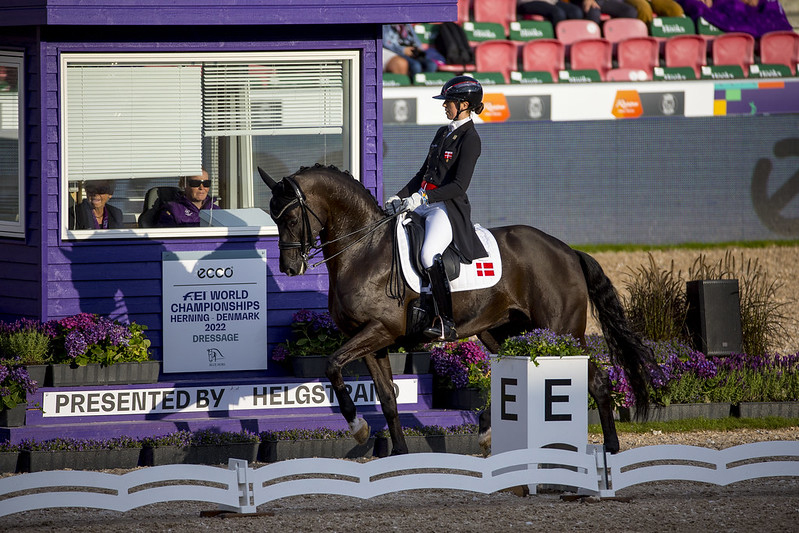
Heiline’s Danciera (FEI photo/Leanjo de Koster)
In seventh Carina Cassoe Kruth’s Heiline’s Danciera (Fürstenball / De Niro). It’s back to Holland for number eight, Nanna Rasmussen’s Zack (Rousseau / Jazz), then back to Germany for ninth, Duke of Britain (Diamaggio / Rubinstein) before finishing with Marshall-Bell.
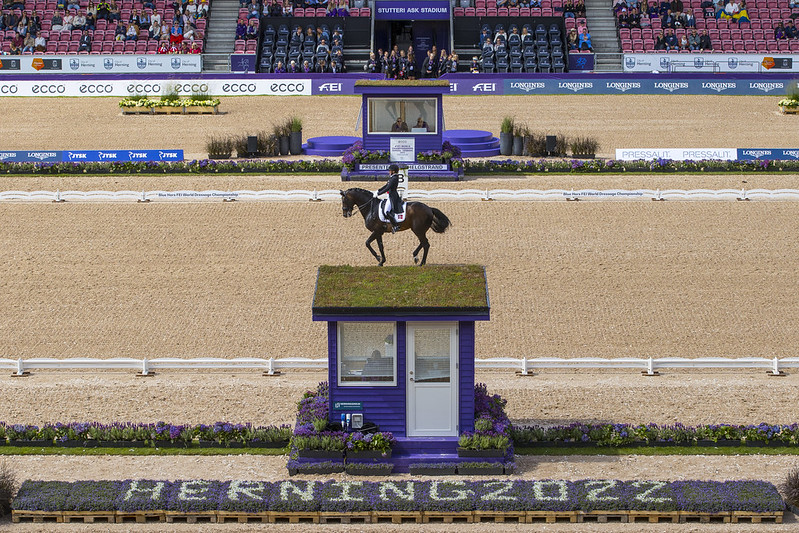
Zack (FEI photo/Leanjo de Koster)
I think it’s best to call this one a draw, but keep an eye on the Trakehners…


